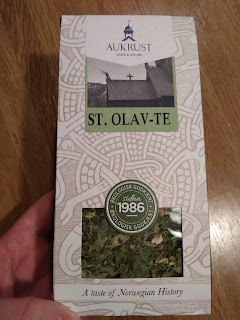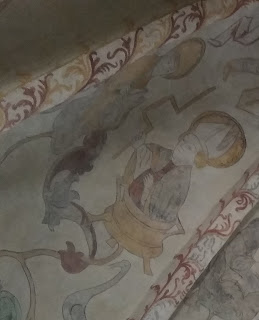if you want to dream, keep those dreams massively achievable
- Richard Ayoade, 8 out of 10 cats does countdown S20E03
In
my previous blogpost, the last of 2021, I provided an overview of some
highlights from my reading that year. These highlights constituted more than
the individual books themselves, as part of what made them highlights had to do
with aspects related to but extraneous from the act of reading itself. One such
aspect is rooted in one of the cornerstones in how my reading through any year
is selected and decided, namely the multiple lists that I aim to cross out
every year. I briefly alluded to these lists in my previous blogpost, and
thanks to a very positive response from friends I have decided that the first
blogpost of the new year will be a presentation of these lists and why I employ
them as guidelines.
Why lists?
Before getting into the lists themselves, however, it is perhaps relevant to
note that a fundamental rationale behind my extensive use of lists has to do
with my personality and its constellation of virtues and vices. On the plus
side – I believe – I am a voracious and very curious reader, who will happily
yet not indiscriminately venture into unknown literary fields. On the negative
side, however, I am also a very slow reader, and the combination of my personal
slowness with the general finiteness of human existence means that I am forced
to make choices in my readings. After all, no one goes into a library and work
their way through it from A to Z (or A to Å in Norwegian).
In addition to this more existential constraint, there are also two aspects
that have an impact in my reading through any given year. On the one hand,
there is the issue of my work requiring a lot of reading, which in turn affects
how I choose my books. On the other hand, there is a part of me that easily
tires of routine and constraint, and which therefore is prone to embark on a
book simply because I want to read it. Since I am also driven by
professionalism and frivolity – in addition to my concerns regarding finiteness
– I am using more than one list simply for the sake of variation. My greatest
fear as a reader is to get stuck and to tire of reading altogether.
The lists
My first reading list was compiled in the spring of 2008. It was my first year
at university, and I was increasingly taking in the vast literary world to
which I had access. Trips to the campus bookshop and the library were
exhilarating excursions that left a deep imprint on me, but at times also
simply overwhelmed me. It was in this period of careful forays into the wider
world of literature that I wrote down two lists: One of books I had read, and
one of books which I would like to read. The second one consisted of a
relatively diverse array of well-known and lesser-known books, mainly fiction,
yet this diversity was severely hampered by my general inexperience of the literary
world’s infinite possibilities. Even so, the list was a product of my
continuing desire to eventually be well-read, interesting and cultured, and I
although I have removed some items from the list as they have fallen out of
interest, I continue to believe that if I do manage to get through all these
books, I will be much better for it.
As I had compiled the second list, I quickly saw that this was going to be a
life-long project, yet despite this revelation – or perhaps perversely because
of it – I turned my attention to other titles instead. It was only in the
course of 2009, if memory serves, that I started to let this list guide me more
systematically. It was also then, I think, that I stopped putting new items on
that list, even though the number of books that I wanted to read grew steadily
for each new course I took.
Several years later, as my list of books that I had read grew longer, and my
list of books I wanted to read did not diminish as quickly as I had hoped, I
was introduced to another system of lists thanks to my youngest sister. This
system was comprised of triads: Three books in three or more categories that
would guide the reading in the course of a year, and that would open up for
some variety. As my desire for titles had gone way beyond the list from 2008 at
that point, possibly in 2013, I embraced this system and set down four
categories from which to choose my titles. I still use these categories to this
very day.
One category is my reading list from 2008. Even though I have picked up the
pace, there are still, at the time of writing, 138 books to be crossed off,
some of which are quite lengthy. For this reason, making sure that I at least
go through a minimum of three each year will hopefully keep inspiring me to
finish before I reach the age of 80.
A second category consists of Nobel laureates in literature. This category is
more of a mixed bag in my eyes. Whereas my list of 2008, at least in its
current configuration, solely includes items that I think will either extend my
literary horizon or at least fill in various embarrassing gaps, the selection
of Nobel laureates is beyond my control and sometimes contrary to what I
consider to be necessary reading. For instance, in 2016 I read Harold Pinter’s The
Homecoming and disliked every second of it. Granted, there is value in
having read it, and there are very few books that I will consider unworthy of
reading, or that I will regret reading. But I think it is fair to say that I
would not have finished The Homecoming had it not been for Pinter’s
status as a Nobel laureate and the canonicity conferred upon him by that status.
For this reason, I do not prioritise the Nobel list as highly as I do others.
A third category is Norwegian books. As I had spent much of my early twenties
reading anglophone literature, I came to the realisation that I had neglected
the literary heritage of my native country, which is both rich and interesting.
In a move to rectify my ignorance and inexperience, I decided to read a minimum
of three books that can in some way or another be construed as Norwegian. This
means that I do not limit myself to books written by Norwegian authors since
the country’s established autonomy in 1814, or its independence in 1905, but in
general books that have been produced within, or by people from, the cultural
geography known as Norway at any given point in time.
A fourth category is academic books. This category comes in part from the
acknowledgement that my professional life presides over much of my reading in
the course of a year, but rarely in the form of entire books. Very often, I
will consume academic literature in the form of articles, perhaps chapters, and
often in a rather squirrelsome way, meaning that I am looking for specific
pieces of information from which I can build my own texts, my own arguments, or
my own teaching. This category is a way to ensure that I also read some books
in full.
In addition to these two categories, there are two others that I eventually
realised were necessary in order to make even more of my reading. The first of
these two categories is books by women. Because I am a medievalist, a lot of my
source material and a lot of the older academic texts that I still need to
consult are written by men. Moreover, since many of the books I included in my
list of 2008 are drawn from the Western cultural canon of before 1900, there is
an overweight of male writers. Similarly, the list of Nobel laureates is
heavily male-dominated, and continues to be so. I am, however, deeply convinced
that a wide reading serves the purpose of gaining a wider understanding of the
world and its reality, and for that understanding to be attained it is
necessary to read a wide representation of humanity. One way of ensuring a wide
representation is to consciously read more women, and that includes, of course,
trans women. Additionally, and perhaps especially in relation to the next
category, I have found that many female authors have access to or are conscious
of social issues and spheres that many male authors have historically either
neglected or badly misrepresented. Consequently, I find myself benefitting
greatly from reading books by women – beyond the quality of the individual
books.
The final category came into place in the autumn of 2017, and I have written
about it on this blog at various times already. This category is to read one
book from each of the world’s 197 countries (and also Western Sahara, which is
not yet recognised by the UN). My project of travelling the world by page was
inspired by the project A Year of Reading the World by British journalist Ann
Morgan, and I picked it up after I had handed in my PhD thesis. So far, I have
had a great range of experiences, and learned much more than I had anticipated
– naturally – and it continues to be a project that pays enormous dividends. In
combination with the previous category, reading women, I often seek out works
by women from the new countries, and this, I believe, has provided an even more
nuanced view of various countries of their cultures than I would otherwise have
had.
These six categories, then, are what guide my yearly reading. Often, they can
be done in combination, fortunately, but in any case, they ensure that I do not
tire of reading anytime soon. In addition to these categories, of course, I
also pick up books that do not belong in any of them, breaking free of the
guidelines and the lists completely. I have so far avoided calling this a
seventh “sundries” category, although in effect that is exactly what it
is.
The lists in 2021
As much as I enjoy talking about books and reading, I have long been very
hesitant to enumerate things I have read. Such enumerations – or lists of
finished reading, rather – often have or can be seen as having a competitive
undertone. Personally, I am very fond of such overviews, because they often
provide great recommendations. However, since reading is about quantity rather
than quality, and since we all have different frameworks that open up or limit
our reading, I will close this blogpost with one book from each of the six
categories by which I have organised my reading in the previous year. All in
all, 2021 was a very good year for reading, and I hope that 2022 will prove
even better.
Category 1, a book from my old reading list: Christopher Marlowe, Doctor
Faustus
Category 2, a Nobel lauerate: Louise Glück, The Wild Iris
Category 3, a Norwegian book: Helge Ingstad, Klondyke Bill
Category 4, an academic book: Henry Bainton, History and the written word
Category 5, a book by a woman: Elizabeth Lambourn, Abraham’s luggage
Category 6, a book from a new country: Maïssa Bey, Do you hear in the
mountains (Algeria; translated by Erin Lamm)


Following these categories, I am pleased to say that I did manage to read more than the minimum requirement of eighteen different books, and so the system – in its crooked way – definitely works for me. I hope it will continue to do so in the coming months.










